November 6th, 2024
Designing interiors can be an arduous task with so many options and starting off definitely requires help. One common challenge of redecorating an entire home or just one room, however, is creating an appealing yet practical space that feels personal while still remaining stylish and functional. Striking the balance between various components, resulting in spaces that feel either too busy or empty.
Understanding and applying the seven elements of design in interior design– space, line, form, light, colour, texture, and pattern is critical to successfully design any room. When used appropriately, they create harmony and express personal styles while offering maximum comfort for all the residents of a space.
This blog post looks at how each element contributes to a space’s overall aesthetic and functionality, providing practical tips for using them effectively and creating welcoming interior spaces.
7 Essential Elements of Design That Can Elevate Your Interiors
Here are the seven elements of design in interior design that can be put into use to elevate your interiors –
1. Space: Establishing Balance and Functionality
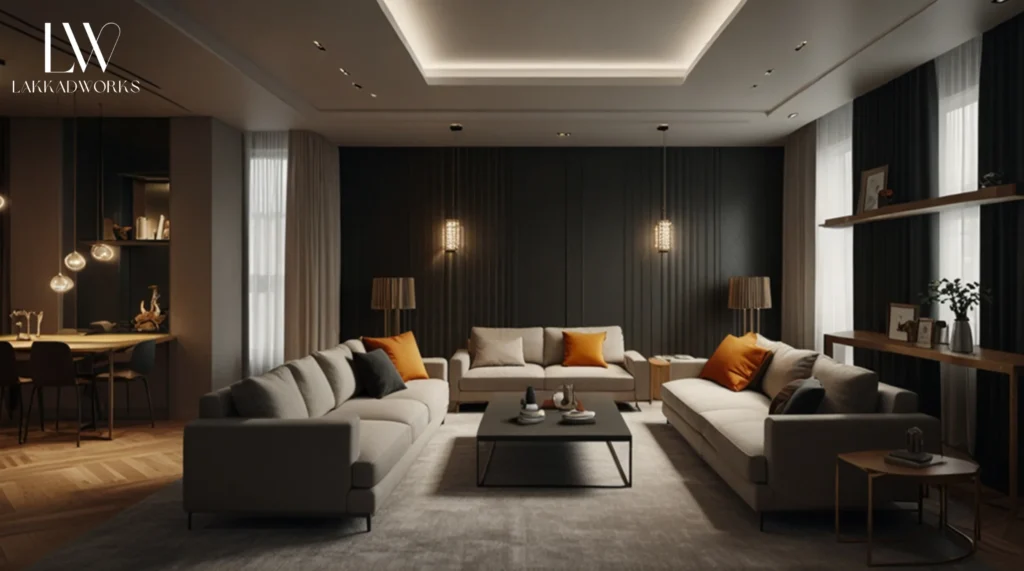
Space is at the core of interior design. This term refers to any area within a room, both horizontally and vertically. When considering how best to utilise your available space, it is vital that you consider how much space you have available to use wisely.
To achieve harmony in space, try not to overcrowd your furniture and decoration. In smaller rooms, opt for minimalist pieces that save space but still look stylish. Fill spaces thoughtfully with functional pieces such as reading nooks or plants.
Either way, making sure there is enough space to move freely is vital to making the room welcoming. Effective use of space with elements of interior design means finding an equilibrium between emptiness and fullness for maximum comfort and functionality.
Maximise Space and Style with Customisable Storage Units!
2. Line in Design
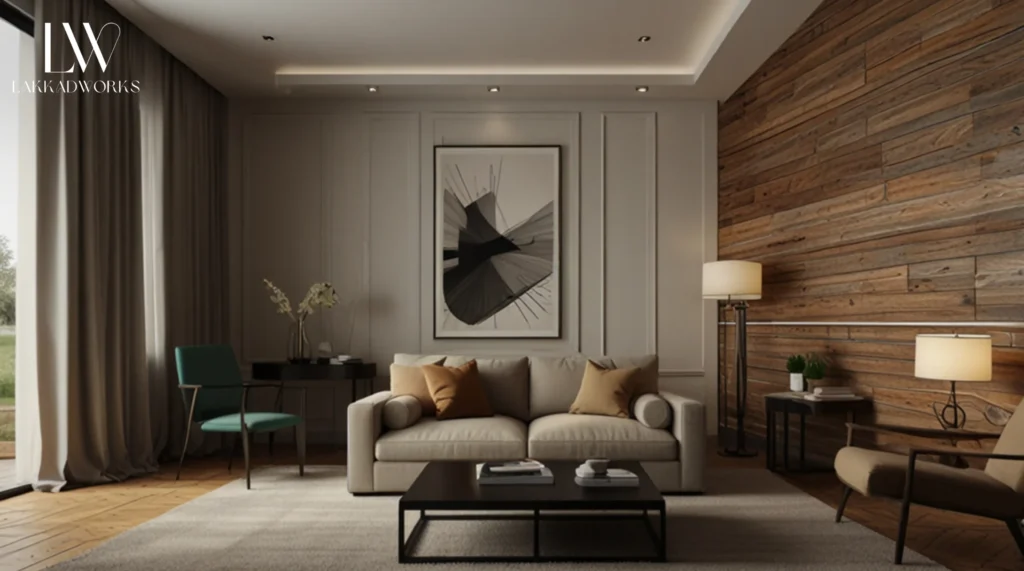
Lines play an essential part in design by guiding how our eyes move around a room. There are three categories of lines – horizontal, vertical, and dynamic (diagonal or curved). Each plays an integral part in shaping how we experience space.
Horizontal lines found on tables or shelves offer stability. Vertical lines in tall furniture pieces or windows give a room the impression that it is taller and more prominent. Dynamic lines, such as spiral staircase curves or roof beam slants, add energy and creativity.
By thoughtfully arranging lines in a room, you can help people move through it while creating visual interest. Pairing vertical with some horizontal elements of interior design create balance, adding dynamic lines makes the room more vibrant and unique.
3. Form: Give Your Space Its Shape
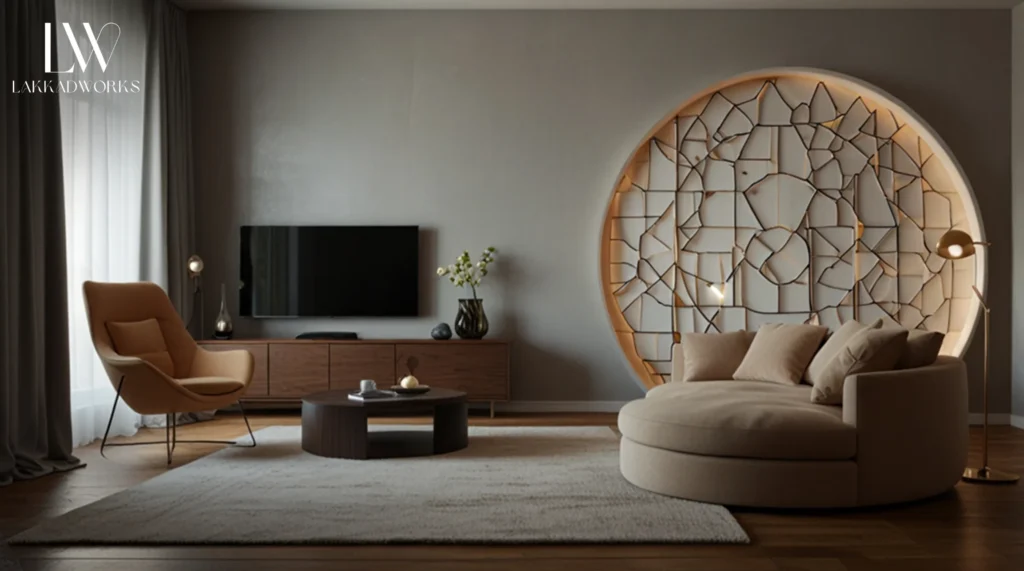
Form refers to the shapes that give a room its character and identity, such as furniture, decor, and architectural features. These forms can range from geometric patterns (such as squares and rectangles) to organic (such as curves and circles).
A successful design often incorporates both forms to add interest and balance its composition.
Geometric forms, like a rectangular dining table or square shelving unit, add a sleek, modern aesthetic to a room. Meanwhile, organic forms, such as curved sofas or circular rugs, can soften a room and make it feel more welcoming.
To effectively incorporate form into a space, consider what shapes already exist within it and add complementary forms for contrast. If a room features many straight lines, introduce some curves for balance. This combination can create an engaging yet cohesive design while adding dynamic energy.
4. Enhancing Mood and Functionality
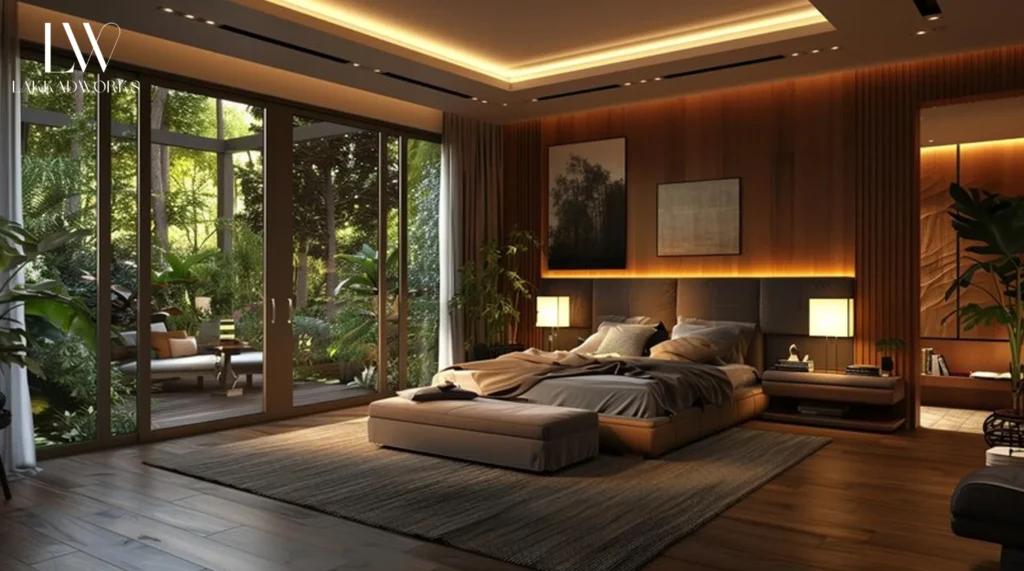
Lighting is one of the key elements in interior design because it directly affects how a room feels and functions. Natural light from windows and skylights, as well as artificial illumination from lamps or overhead fixtures, play an integral part.
Both the types of lighting contribute to making spaces feel welcoming, warm, or larger, whereas poor illumination may leave them cramped and depressing.
When planning lighting, layering various types to achieve a balanced atmosphere is critical to creating the ideal environment in your creative interiors.
Use ambient (like ceiling lights) for general illumination; task (such as desk lamps) for specific activities; accent (such as wall sconces) to highlight artwork or architectural details.
Natural light should also be maximised using light curtains or strategically placing mirrors to reflect it around the room. Proper lighting can enhance both the beauty and practicality of your interiors, making them more pleasant places to live in.
5. Colour as the Cornerstone of Design
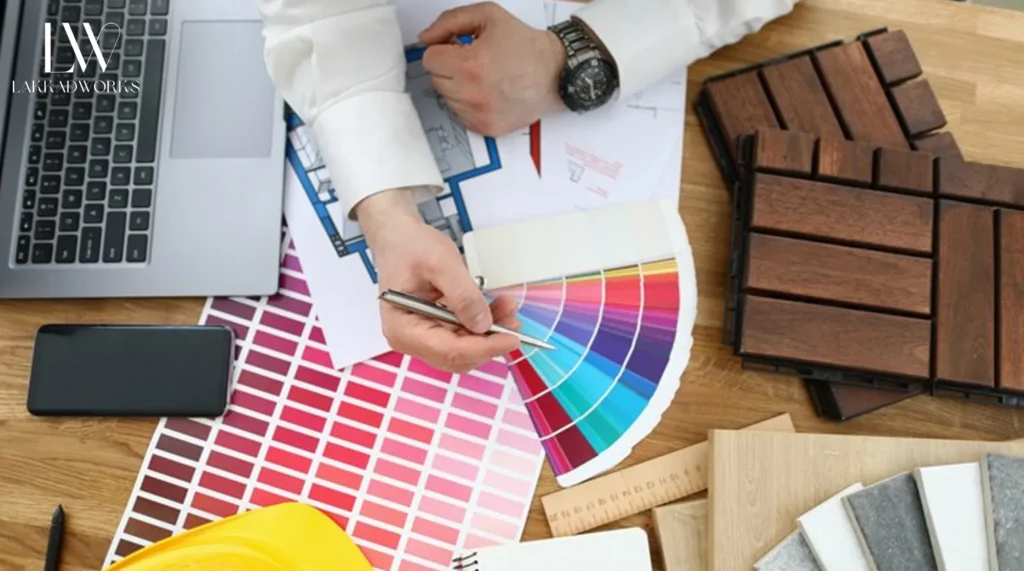
Colour can be a potent design tool, shaping the atmosphere of a space. It can make you feel warm or cool, calm or energetic. Selecting the appropriate palette is vital to create the atmosphere you seek.
Warm colours like reds, yellows, and oranges bring energy and warmth into a room, while soothing colours such as blues, greens, and purples have an easing effect that creates more spaciousness and peace. Neutrals like white, grey, and beige provide versatile backgrounds that pair nicely with bolder accents.
As you select interior colours for your space, keep its purpose in mind. Bold, vibrant hues may work well in social areas like living rooms and kitchens, while soft tones may work best in bedrooms and bathrooms that focus on relaxation.
By carefully considering all these factors when making colour selection decisions for each room in your interiors, you can achieve an inviting space that becomes more accessible in creative interiors.
6. Texture for Depth and Interest
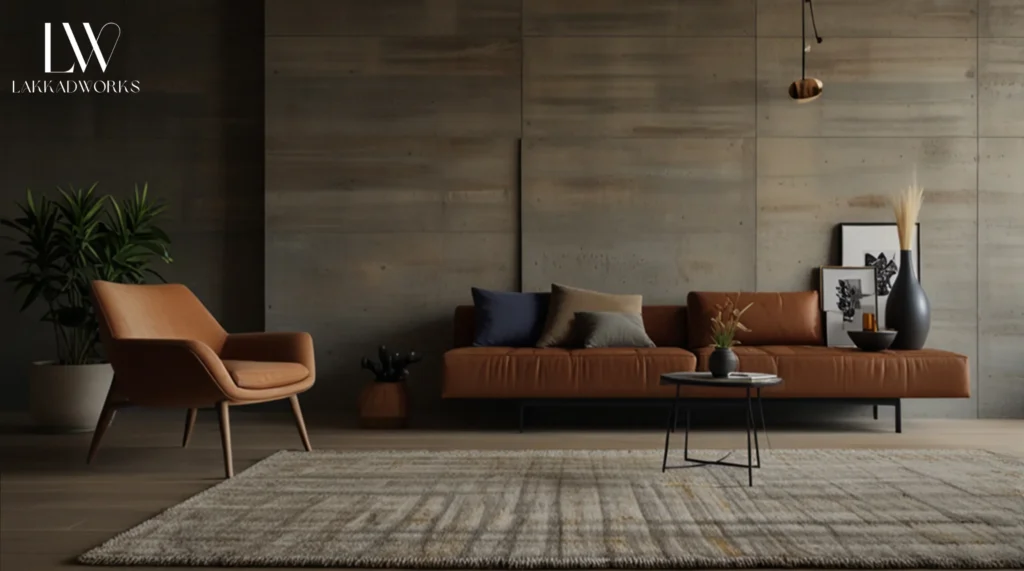
Texture refers to how surfaces feel or appear within a room, playing an essential part in making it more dynamic and exciting. Mixing different textures adds depth and contrast, helping keep a room from feeling monotonous or flat.
There are two kinds of texture: visual (such as smooth or rough surfaces) and tactile (soft or hard). Combining materials can make adding different textures easy. Mixing smooth, sleek surfaces like glass or metal with soft, inviting materials like wool or velvet creates a balance between materials.
For instance, pairing sleek surfaces such as in modular wardrobe designs or glass with plush cushions adds softness, and using thick rugs adds extra cosiness. Careful selection of textures creates an inviting and engaging space with elements of interior design.
7. Pattern: Establishing Rhythm and Movement
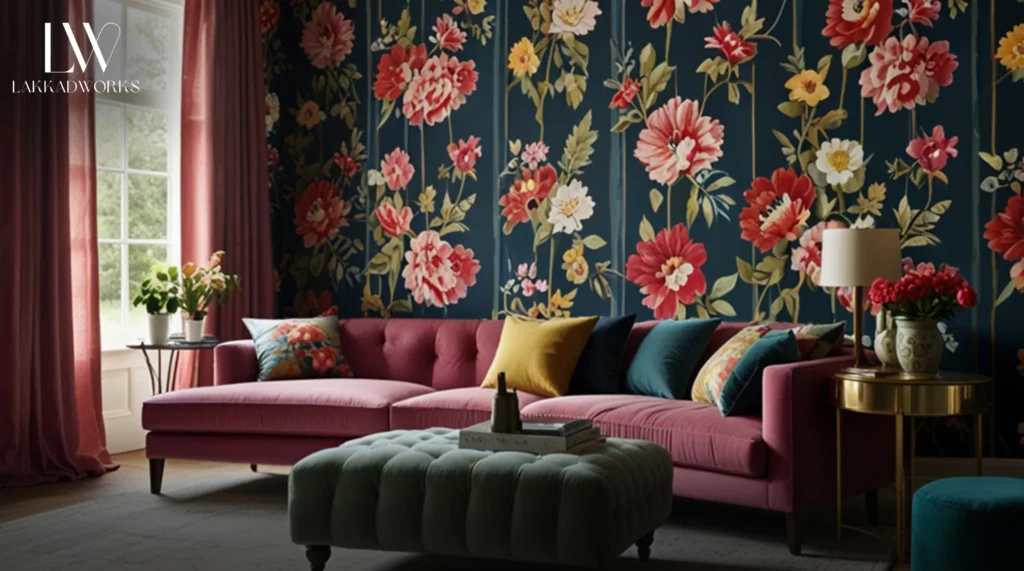
Patterns add rhythm and movement to a room by repeating shapes, colours, or designs. Bold or subdued designs such as floral wallpaper can add personality and character, while others, like stripes on a rug, can provide visual interest without taking over an entire room’s aesthetics.
They help break up large areas visually, so the room appears more visually engaging overall. But use patterns carefully to avoid overwhelming a space. Start small by adding pillows, throws, or curtains that feature patterns.
Moving on with an accent wall featuring bold prints or tiles with patterns in a bathroom or kitchen can add depth and dimension. Combining different patterns is also an option, but ensure they share one colour or theme to keep things visually cohesive.
Balance patterns with solid colours and various textures to create a rhythm that draws the eye throughout a room, adding energy and flow.
Get the Furniture that Fits Your Style and Needs!
Get the Furniture that Fits Your Style and Needs!
Connect with the Best Interior Design Experts in India!
Mastering the seven elements of design in interior design —space, line, form, light, color, texture, and pattern can transform any interior into an inviting sanctuary that reflects personal style while maintaining functionality.
By thoughtfully incorporating these elements of design in interior design, you can create a harmonious atmosphere that feels both cozy and stylish. If you’re looking for expert guidance in achieving the perfect balance in your home interior designs including modular kitchen designs and modular wardrobe designs, consider Lakkadworks.
With a focus on innovative design solutions and personalized service, Lakkadworks can help you bring your vision to life, ensuring your interiors are not only beautiful but also a true reflection of you. Contact Lakkadworks for amazing and creative interiors.


